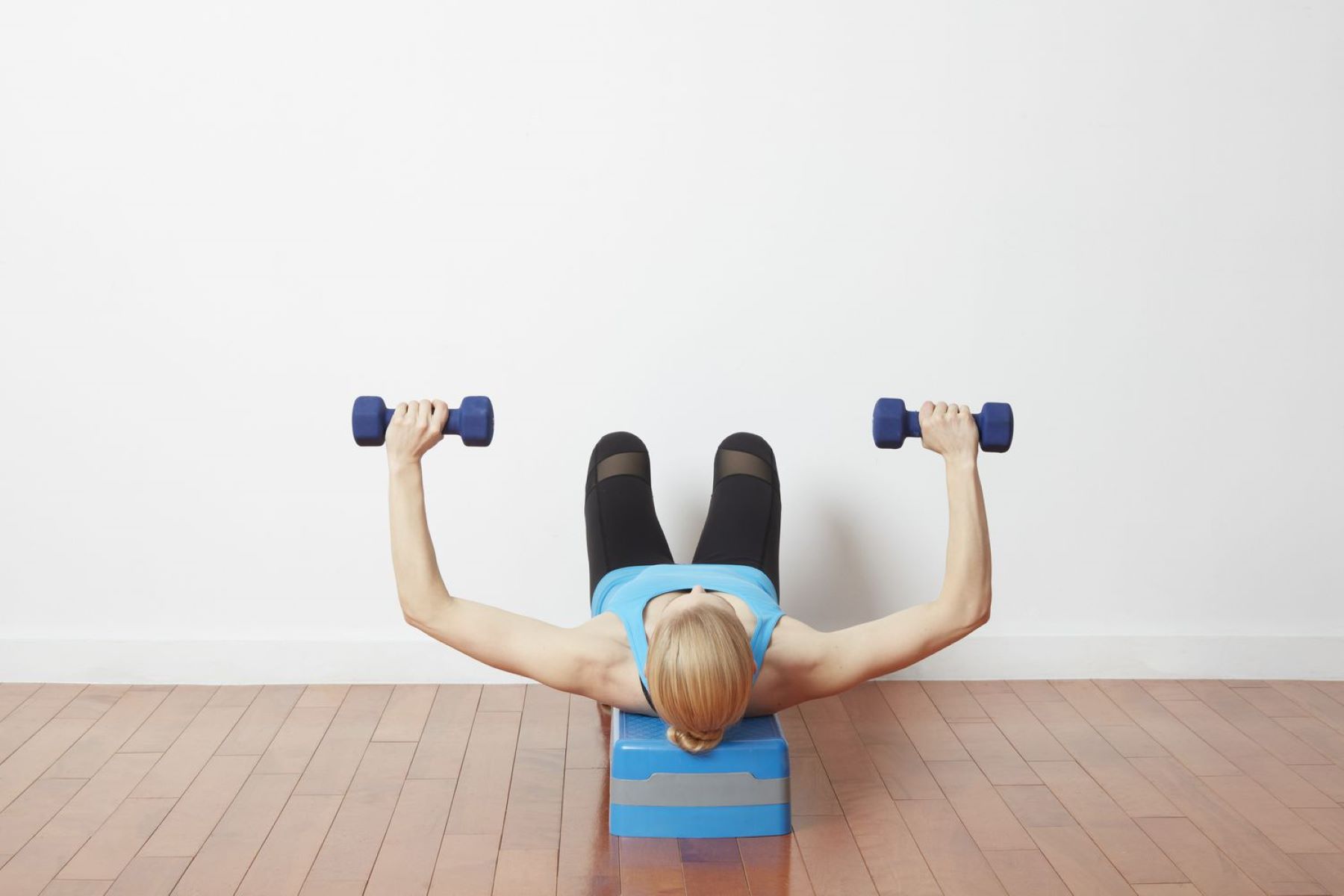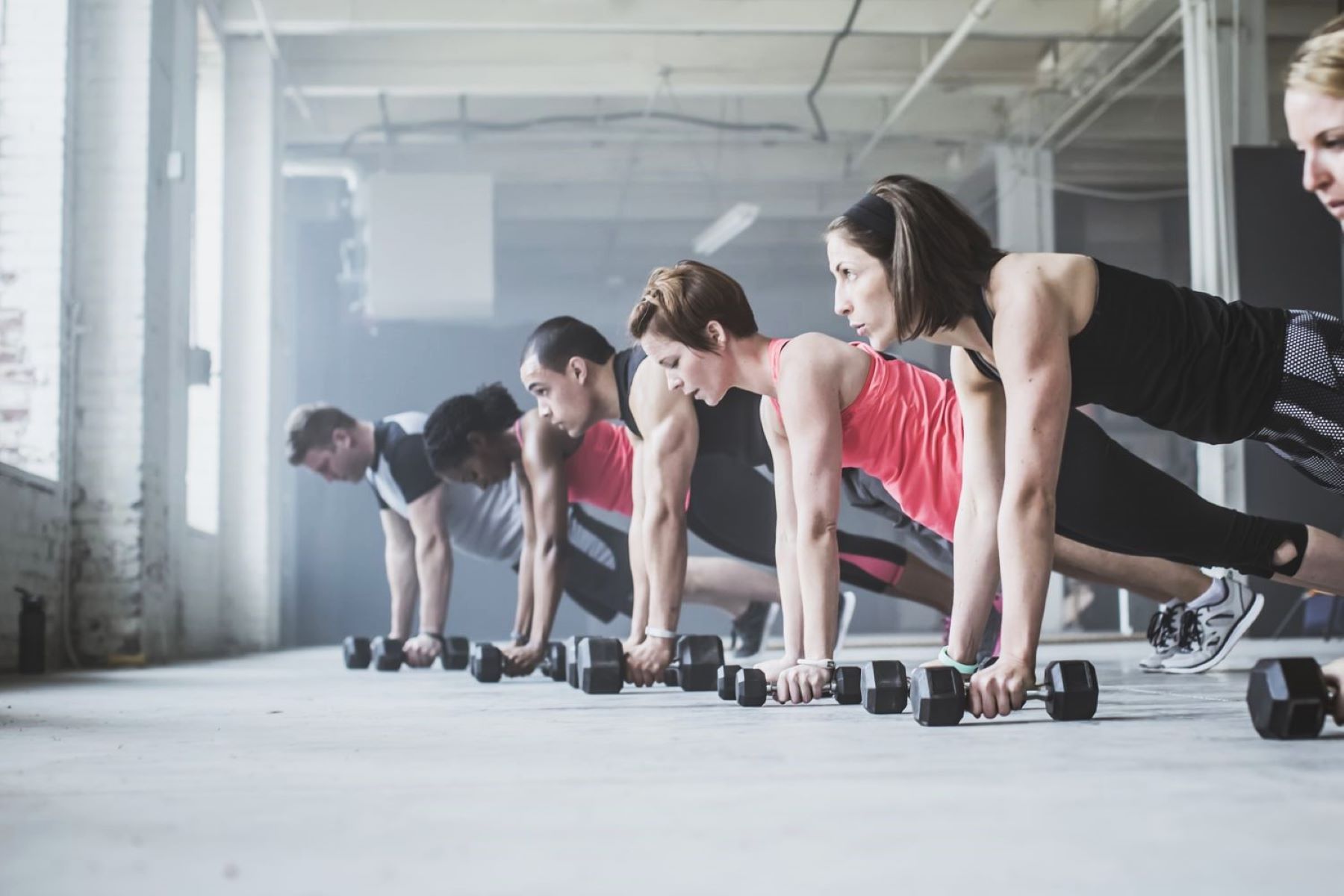Home>Health & Nutrition>Beginner Core Workouts And Exercises To Try At Home


Health & Nutrition
Beginner Core Workouts And Exercises To Try At Home
Published: February 20, 2024
Improve your health and nutrition with these beginner core workouts and exercises to try at home. Strengthen your core and achieve your fitness goals with these effective routines.
(Many of the links in this article redirect to a specific reviewed product. Your purchase of these products through affiliate links helps to generate commission for Therunningadvisor.com, at no extra cost. Learn more)
Table of Contents
Introduction
When it comes to fitness, the core is often referred to as the body's powerhouse. A strong core not only enhances physical performance but also contributes to overall stability and balance. Whether you're a fitness novice or a seasoned enthusiast, incorporating core workouts into your routine can yield a multitude of benefits. From improving posture to preventing injuries, the advantages of a strong core are undeniable.
In this article, we will explore a range of core exercises suitable for beginners, intermediates, and advanced fitness enthusiasts. These exercises can be performed in the comfort of your own home, requiring minimal equipment and space. By incorporating these workouts into your regimen, you can embark on a journey towards a stronger, more resilient core.
The core encompasses more than just the abdominal muscles; it includes the lower back, hips, and pelvis. Engaging in targeted core exercises not only helps sculpt a toned midsection but also supports the spine and promotes better posture. Whether you're aiming to enhance athletic performance, alleviate back pain, or simply tone your midsection, a well-rounded core workout routine can help you achieve your fitness goals.
As we delve into the world of core workouts, it's important to remember that consistency and proper form are key. By gradually progressing from basic to advanced exercises, you can challenge your core muscles while minimizing the risk of injury. Additionally, incorporating variety into your routine can keep your workouts engaging and effective.
Join us as we explore the myriad benefits of core workouts and discover a range of exercises tailored to different fitness levels. Whether you're looking to kickstart your fitness journey or elevate your current routine, these core exercises will set you on the path to a stronger, more resilient core.
Benefits of Core Workouts
Engaging in regular core workouts offers a multitude of benefits that extend beyond achieving a sculpted midsection. Here are some compelling reasons to incorporate core exercises into your fitness routine:
1. Enhanced Stability and Balance
A strong core serves as the foundation for overall stability and balance. By targeting the deep muscles of the abdomen, lower back, and pelvis, core workouts help improve proprioception and coordination, leading to better balance and stability during daily activities and exercise.
2. Improved Posture
Weak core muscles can contribute to poor posture, leading to discomfort and potential injury. Core exercises help strengthen the muscles that support the spine, promoting better alignment and reducing the likelihood of slouching. By cultivating a strong core, you can maintain an upright posture and alleviate strain on the spine.
3. Injury Prevention
A stable and resilient core plays a pivotal role in injury prevention. By strengthening the muscles surrounding the spine and pelvis, core workouts help reduce the risk of back injuries and enhance overall body mechanics. This is particularly beneficial for individuals who engage in physical activities or lead a sedentary lifestyle.
4. Functional Strength
Core exercises target the muscles responsible for everyday movements, such as bending, twisting, and lifting. By enhancing the strength and endurance of these muscles, core workouts contribute to improved functional fitness, making daily tasks more manageable and reducing the risk of strain or injury.
5. Athletic Performance
For athletes and fitness enthusiasts, a strong core is essential for optimizing performance in various sports and activities. From running and cycling to weightlifting and yoga, a stable core enhances power transfer, agility, and overall athletic prowess, leading to improved performance and reduced risk of sports-related injuries.
6. Alleviation of Back Pain
Many individuals experience back pain due to weak core muscles and poor posture. Core workouts can help alleviate back discomfort by strengthening the muscles that support the spine and pelvis. By enhancing core stability and reducing spinal stress, these exercises can contribute to long-term relief from chronic back pain.
7. Toned Midsection
While aesthetic benefits are not the primary focus of core workouts, they are certainly a welcomed outcome. Engaging in targeted core exercises can help sculpt and define the abdominal muscles, leading to a toned and defined midsection that complements overall physical fitness and health.
Incorporating core workouts into your fitness routine can yield a myriad of benefits, ranging from improved posture and stability to enhanced athletic performance and injury prevention. By embracing the holistic advantages of core exercises, you can embark on a journey towards a stronger, more resilient core and overall physical well-being.
Read more: Top Home Workouts For Runners
Basic Core Exercises
1. Plank
The plank is a foundational core exercise that targets the entire core musculature, including the rectus abdominis, transverse abdominis, and obliques. To perform a plank, assume a push-up position with your forearms resting on the ground and your body forming a straight line from head to heels. Hold this position for 30-60 seconds, engaging your core muscles to maintain stability and alignment. As you progress, aim to increase the duration of the plank to further challenge your core strength.
2. Bicycle Crunches
Bicycle crunches are an effective exercise for engaging the obliques and rectus abdominis. Begin by lying on your back with your hands placed lightly behind your head. Lift your legs off the ground and bring your knees towards your chest. As you perform a cycling motion with your legs, simultaneously twist your torso to bring your elbow towards the opposite knee. Alternate sides in a controlled manner, focusing on engaging the core muscles throughout the movement.
3. Bird Dog
The bird dog exercise targets the deep stabilizing muscles of the core, as well as the muscles of the lower back and glutes. Start on your hands and knees, ensuring that your wrists are aligned with your shoulders and your knees are beneath your hips. Simultaneously extend one arm and the opposite leg, reaching them out until they are parallel to the ground. Hold this position for a few seconds, then return to the starting position and repeat on the opposite side.
4. Dead Bug
The dead bug exercise is an effective way to engage the core while promoting spinal stability. Lie on your back with your arms extended towards the ceiling and your legs lifted with knees bent at a 90-degree angle. Slowly lower one arm behind your head while straightening the opposite leg towards the ground, maintaining contact between your lower back and the floor. Return to the starting position and repeat on the opposite side, focusing on controlled movements and core engagement.
5. Mountain Climbers
Mountain climbers are a dynamic core exercise that also elevates the heart rate, making it a great addition to any cardio or HIIT routine. Begin in a high plank position and alternate bringing each knee towards the chest in a running motion. Focus on maintaining a strong core and stable upper body throughout the exercise, engaging the abdominal muscles to drive the movement.
Incorporating these basic core exercises into your fitness routine can lay a solid foundation for core strength and stability. By mastering these fundamental movements, you can progress to more challenging exercises while reaping the benefits of a stronger and more resilient core.
Intermediate Core Exercises
1. Russian Twists
Russian twists are an effective intermediate core exercise that targets the obliques and transverse abdominis. To perform this exercise, sit on the floor with your knees bent and feet elevated slightly off the ground. Lean back slightly to engage the core, and clasp your hands together. Rotate your torso to one side, bringing your clasped hands towards the floor beside your hip. Return to the center and then twist to the opposite side, repeating this motion in a controlled manner. For an added challenge, hold a weight or medicine ball to increase resistance and further engage the core muscles.
2. Plank with Leg Lift
Adding a leg lift to the traditional plank intensifies the engagement of the core and stabilizing muscles. Begin in a forearm plank position, ensuring that your body forms a straight line from head to heels. While maintaining a stable plank, lift one leg off the ground, keeping it straight and parallel to the floor for a few seconds before lowering it back down. Alternate between legs, focusing on maintaining core stability and minimizing any rotational movement in the hips and pelvis.
3. Side Plank with Rotation
The side plank with rotation is a dynamic exercise that targets the obliques and promotes core stability. Start in a side plank position, supporting your body weight on one forearm and the side of your foot, with your body forming a straight line. Extend your free arm towards the ceiling and then rotate your torso, reaching your arm underneath your body and towards the floor. Return to the starting position and repeat the rotation, focusing on controlled movements and engaging the oblique muscles throughout the exercise.
4. Stability Ball Knee Tucks
Stability ball knee tucks are an intermediate core exercise that challenges stability and control. Begin in a high plank position with your shins resting on a stability ball. Keeping your hands firmly planted on the ground, use your core muscles to draw the stability ball towards your chest by tucking your knees in. Slowly extend your legs back to the starting position, maintaining stability and control throughout the movement. This exercise engages the entire core while also incorporating elements of balance and coordination.
5. Flutter Kicks
Flutter kicks are a dynamic core exercise that targets the lower abdominal muscles. Lie on your back with your hands placed beneath your hips for support. Lift your legs off the ground and alternate kicking them up and down in a fluttering motion. Focus on keeping your lower back pressed into the floor and engaging the lower abdominal muscles to control the movement. Flutter kicks can be performed for a designated duration, such as 30-60 seconds, to effectively challenge the core muscles.
Incorporating these intermediate core exercises into your workout routine can elevate the intensity of your core training while promoting strength, stability, and muscular endurance. By progressively integrating these exercises into your regimen, you can continue to challenge and strengthen your core, paving the way for enhanced physical performance and overall fitness.
Read more: Sprinting Technique: A Beginner’s Guide
Advanced Core Exercises
1. Dragon Flags
Dragon flags are an advanced core exercise that demands exceptional strength and control. Made famous by martial artist and actor Bruce Lee, this exercise targets the entire core, particularly the rectus abdominis and the stabilizing muscles of the lower back. To perform a dragon flag, lie on a flat bench or sturdy surface and grasp the edge of the bench behind your head. Lift your entire body off the bench, keeping it straight and rigid, and slowly lower it towards the ground while maintaining control. Once your body is parallel to the ground, reverse the movement to return to the starting position. Dragon flags require significant core strength and stability, making them a challenging yet rewarding exercise for advanced fitness enthusiasts.
2. Hanging Windshield Wipers
Hanging windshield wipers are an advanced exercise that targets the obliques and challenges core stability and coordination. To perform this exercise, hang from a pull-up bar with an overhand grip, ensuring that your body is straight and your legs are together. From this position, engage your core and slowly rotate your legs to one side, aiming to bring your feet as close to the bar as possible. Reverse the movement to the opposite side, maintaining control and minimizing swinging motion. Hanging windshield wipers require substantial upper body and core strength, making them an effective exercise for enhancing overall core stability and strength.
3. Ab Wheel Rollouts
Ab wheel rollouts are a challenging exercise that effectively targets the entire core, including the rectus abdominis, obliques, and deep stabilizing muscles. Begin in a kneeling position with your hands gripping an ab wheel or a similar apparatus. Slowly roll the wheel forward, extending your arms and allowing your body to lower towards the ground while maintaining a straight back. Once you have reached a challenging yet manageable distance, engage your core to reverse the movement and return to the starting position. Ab wheel rollouts require significant core strength and control, making them an advanced exercise that can contribute to enhanced core stability and muscular endurance.
4. L-Sit
The L-sit is an advanced exercise that targets the entire core, as well as the hip flexors and upper body. To perform an L-sit, sit on the ground with your legs extended in front of you and your hands placed beside your hips. Lift your entire body off the ground, keeping your legs straight and parallel to the ground while supporting your weight with your hands. Hold this position for a designated duration, focusing on engaging the core and maintaining stability. The L-sit is a challenging exercise that requires exceptional core and upper body strength, making it an effective way to enhance overall core stability and muscular control.
Incorporating these advanced core exercises into your fitness regimen can elevate your core training to new heights, challenging your strength, stability, and muscular endurance. By progressively integrating these exercises into your routine, you can continue to push the boundaries of your core strength and unlock the full potential of your physical fitness.
Tips for Getting Started
Embarking on a journey to strengthen your core is an empowering endeavor that can yield numerous benefits for your overall health and fitness. Whether you're new to core workouts or seeking to revitalize your training routine, getting started on the right foot is essential for long-term success. Here are some valuable tips to guide you as you begin your core strengthening journey:
-
Assess Your Current Fitness Level: Before diving into core exercises, take a moment to assess your current fitness level. Understanding your strengths and areas for improvement can help you tailor your workout routine to suit your individual needs. Whether you're a beginner, intermediate, or advanced fitness enthusiast, there are core exercises suitable for every level of experience.
-
Focus on Proper Form: When performing core exercises, prioritizing proper form is crucial. Maintaining correct alignment and engaging the targeted muscles ensures that you derive maximum benefit from each movement while minimizing the risk of injury. If you're unsure about proper form, consider seeking guidance from a fitness professional or utilizing online resources to familiarize yourself with the correct techniques.
-
Start with Basic Exercises: If you're new to core workouts, start with basic exercises that target the foundational muscles of the core. Building a strong foundation through exercises such as planks, bicycle crunches, and bird dogs can set the stage for progression to more challenging movements as your strength and endurance improve.
-
Gradually Increase Intensity: As you become more comfortable with basic core exercises, gradually increase the intensity of your workouts. This can be achieved by extending the duration of holds, incorporating additional repetitions, or progressing to more advanced variations of familiar exercises. By progressively challenging your core muscles, you can stimulate growth and development over time.
-
Incorporate Variety: To keep your core workouts engaging and effective, incorporate a variety of exercises that target different aspects of core strength and stability. Mixing up your routine with a diverse range of movements can prevent monotony and ensure that all areas of the core are adequately stimulated.
-
Listen to Your Body: Pay attention to your body's signals during workouts. If you experience discomfort or pain that is beyond normal muscle fatigue, it's important to reassess your form and technique. Additionally, allowing adequate rest and recovery between core workouts is essential for muscle repair and growth.
-
Stay Consistent: Consistency is key when it comes to reaping the benefits of core workouts. Aim to incorporate core exercises into your regular fitness routine, whether it's a few times a week or as part of your daily workout regimen. Consistent training can lead to noticeable improvements in core strength, stability, and overall physical performance.
By embracing these tips as you embark on your core strengthening journey, you can lay a solid foundation for long-term success and progress. With dedication, proper technique, and a willingness to challenge yourself, you can cultivate a strong and resilient core that enhances your overall fitness and well-being.
Conclusion
In conclusion, the journey to a stronger and more resilient core is a transformative endeavor that encompasses a myriad of benefits for overall health and fitness. From enhancing stability and balance to promoting better posture and reducing the risk of injury, core workouts play a pivotal role in cultivating a strong foundation for physical well-being. Whether you're a beginner taking the first steps towards core strength or an advanced fitness enthusiast seeking to elevate your training, the holistic advantages of core exercises are undeniable.
By delving into the world of core workouts, individuals can unlock the potential for improved athletic performance, functional strength, and long-term relief from back pain. The diverse range of exercises, spanning from basic movements to advanced challenges, offers a pathway for continuous growth and development. Embracing core workouts not only contributes to a toned midsection but also fosters a deeper sense of bodily awareness and resilience.
As we reflect on the benefits and intricacies of core training, it becomes evident that consistency, proper form, and gradual progression are the cornerstones of a successful core strengthening journey. By incorporating a variety of exercises that target different aspects of core strength and stability, individuals can ensure a well-rounded and effective training regimen. Moreover, listening to the body's signals, allowing for adequate rest and recovery, and staying committed to a consistent workout routine are essential elements for sustainable progress and growth.
The journey towards a stronger core is not merely a physical pursuit; it is a testament to dedication, perseverance, and the unwavering commitment to personal well-being. As individuals embrace the challenges and triumphs of core workouts, they embark on a transformative path that transcends physical fitness, fostering a deeper connection between mind, body, and spirit.
In essence, the benefits of core workouts extend far beyond the realm of physical aesthetics; they encompass the holistic enhancement of one's overall quality of life. By integrating core exercises into a comprehensive fitness regimen, individuals can embark on a journey towards a stronger, more resilient core that serves as the cornerstone of their physical well-being and vitality.










